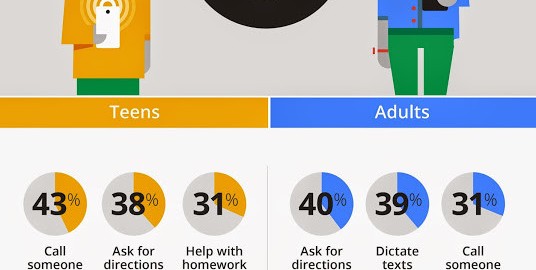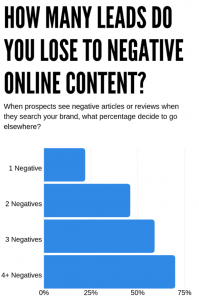SEO has become probably the best methodology to drive your ROI. In 2016, it’ll aim to help you get more out of your conversions. So, let’s take a look at the SEO future predictions for the next year:
To begin with, take note of how Penguin 4.0 update has affected your website. Make use of the remaining days of 2015 to resolve all existing issues. Create a robust SEO strategy to fight Penguin and step in the new age of SEO as you welcome 2016.
Here are some other predictions to take note of:
Mobile-friendly

mobile-friendly
As mobile devices are ruling the world, having surpassed laptop and desktop searches in terms of paid clicks and traffic generation, it has become imperative for businesses to develop mobile-friendly websites and make their business decisions attuned to this new wave of mobile savvy clientele. Every mobile related aspect, like mobile design, mobile marketing strategy, mobile search advertising and marketing, mobile CRM, mobile payment and mobile e-commerce, mobile coupons and integration of mobile with local and social, needs to be considered.
Semantic searches

Semantic search is an advanced data searching technique where the search query targets to determine the contextual meaning of the search words and intent of the searcher rather than focusing on finding just the keywords. Thus, it provides the user with more meaningful search results by understanding and assessing the search phrase and finding the most relevant results in a database, website or any other data repository. No wonder that semantic search is touted as the future of marketing. By applying the following tips, you can make the most of semantic search.
- Create content that is understandable.
- Try to identify the “companion” words that usually follow the keyword and insert them into your content. That way, you’ll be able to provide some clues related to the subject of your content to search engines.
- Use variations and synonyms of words that are directly related to the subject matter of your content.
- Use the keywords effectively to take complete advantage of semantic search.
- Link to third-party websites related to some aspect of your business/domain/industry to provide your users with more value.
- Mark up your content on specific social networking sites.
- Use tools like schema.org, Yandex Checker, AlchemyAPI, Schema Creator, Gruff etc. to add more semantic value to your content.
Outstanding quality

As SEO has become extremely content driven these days, you need to hire experienced people, even if the charges are steep, especially when you wish to get good results. After all, doing link audits, performing complete link clean-ups (if required, based on the results of link audits), driving organic traffic your way via quality content – all take effort and time, which explains why quality SEO services won’t be cheap. Company executives and CEOs too shouldn’t opt for SEO trial-and-error methods as they aren’t aware of the present SEO landscape and may end up doing more harm than good. So, it always pays to hire experienced SEO specialists for the task.
Good user experience

Search engines directly consider a restricted number of changeable factors like links, keywords and site structure. Linking patterns, machine learning and user engagement metrics jointly help search engines to make a significant number of hunches about a site. User experience and usability provide significant benefits to the external popularity of a site. This popularity is interpreted by search engines as an indication of higher quality. An empathetic and thoughtful user experience encourages users to bookmark, share, return visits etc. – all of which are signals of a quality site, which in turn helps in achieving higher rankings.
Organic link

Links that don’t have a direct objective of influencing Google’s rankings are called organic links. When a site links back to another, the link is considered by Google as a vote. These “votes” normally help a site to get higher ranking in the search engine results. The only requirement here is to get such backlinks naturally or organically. Following are some useful tips to obtain organic links.
- Create original information
- Share your knowledge
- Be an active participant on various social networking platforms
- Provide valuable answers to questions online
- Build community
- Offer a service to your community for free
Mobile optimization

Earlier in 2015, mobile searches exceeded desktop searches. The trend will hold strong even in 2016 as mobile traffic is predicted to be of much more importance than desktop traffic in the coming 5 years. According to Google, a desktop-specific website isn’t required. Commitment of Google towards a “mobile” user experience across all devices reflects in their change to local three-pack.
App store optimization

To sustain in this extremely competitive world, you have to find the right audience for your app. App store optimization or ASO is one of the most effective methods to execute mobile app marketing. Execution of ASO ensures showing up of the mobile app for appropriate search queries and thus getting organic installs and impressions. Finding the right keywords or topics is the most fundamental and significant part of app store optimization as that would describe the exact search items of your target audience.
Local SEO (Customized Research Study)

With the advancement of local indexes of Google and arrival of wearable devices, local searches will provide more accurate results. When searching for a certain business, the results will consist of your neighborhood or street corner instead of showing the city or state region.
Voice SEO

Voice SEO has shifted the entire mobile search interface to a different era. When a voice request is made, the results show up on map interface. Users can hear more information about a particular listing by touching the map icon. Audio files are worth adding to your website in order to make your presence felt in such search results.
Indexing of Social Content

In a mobile search for a particular news object, the results consist of a couple of tweets as Google has finalized deals with Twitter and Facebook. More social content platforms will become indexed in 2016 and be made available to search engines. Social media posts will carry a similar amount of value as independent web pages. From an SEO viewpoint, the difference between “social media” and “web” will begin to become indistinct.
Conversion Optimization

Conversion optimization is the process of using customer feedback along with analytics to improve your website’s performance. A better conversion rate is equal to an improved ROI. Other than improving the ROI, conversion optimization also helps to protect the restricted attention span of visitors by providing them with exactly what they want. It’s important to keep in mind that optimization is all about acquiring the right type of customers for your business. In 2016, Less-is-more technique will be massively used for conversion optimization.
Social Presence

In 2016, social presence is going to be more important for businesses. Google searches already show Facebook and Twitter results when you search for a news item these days, and in the forthcoming years, you are likely to see more of these social media pages in your mobile search results. Consequently, the boundary line between “social media” and “web” will get blurred further in 2016 from an SEO perspective.
Page tagging

2016 will experience more of mobile searches, which will surpass desktop searches. This change will give a boost to page tagging in a more frequent manner as businesses start rolling out tags to offer structure to mobile users’ results that require different browsers and devices to load pages differently.
Bifurcation Buyer Journey

In 2016, SEO will be divided into these three stages:
- Awareness: In this stage, you will have to work on a strategy that provides information. Create marketing materials that will make them aware of a problem and related information.
- Consideration: Here you give them a set of solutions that work best to solve their problems. Giving them enough options will then help them select the best suitable one.
- Decision: This is the stage where your audiences have made a decision and have agreed upon a point that they will move ahead with. You have to create material that will encourage them to move forward without hesitation.
Call-only ads

Call-only ads are upgrades of existing call extensions. In call-only ads, phone number is the first visible thing normally created using larger font size and different text color. The second visible thing happens to be the call button that enables an instantaneous call to action.
Alienation of keyword research

In 2016, you would no longer be able to use a blanket SEO strategy for all platforms or the same list of keywords for every platform. Rather, you will have to use:
- Voice SEO: The algorithmic rules that are applicable for any mobile optimization will work well for voice search too. You’ll also have to use Google’s Knowledge Graph and local SEO strategies as voice searches primarily occur on mobile devices and most have local intent.
- Local SEO: You can leverage Google Trends for this.
- Mobile SEO: You can get mobile-specific keywords using the Google Keyword Tool and Google Analytics (go to Audience, then click Mobile and then go to Overview in the R.H.S navigation to filter). Though it won’t be possible to ascertain mobile keywords using Bing Ads Intelligence, you can use a little trick and leverage Bing’s autocomplete feature in mobile to get the desired keywords.
- App SEO: SEO for mobile apps or ASO (App Store Optimization) will be very important in 2016 to ensure that your app reaches the right audience. ASO would become an integral part of mobile app marketing, which would be the most efficient and cheapest way to attract organic impressions and installs.
Search box optimization

Search box optimization is the method of deceiving Google Algorithm to put your blog or brand name in Google Autosuggestions. As Google Autosuggestions affect 75% of search queries, a lot of internet marketers are using search box optimization to keep their brand in front of the users before they hit the search button. This is accomplished by searching the target term for numerous times in Google.
Outgoing links

Google identifies the nature of your article by using outgoing links. If you link to a trusted source, Google considers your site as a trusted one as well. However, if quality of the linked article is poor, it will affect your site’s reputation and search rankings adversely. To avoid this, you must provide outbound links to trusted sources.
Link Building trends

Link building was considered as one of the fundamental elements of SEO. In the present day media landscape, internet marketers incorporate significant links instead of gathering bunch of useless links. To sustain in today’s competitive world, marketers have to publish unique and fresh content and insert only those links that promote or support the main message provided by the content. Google always encourages a site that has the ability to provide answers for associated search queries and thus the site ranks high in SERPs. Incorporating links of these websites would greatly help you in 2016 to increase the quality of your website’s content.
End of content farms

It seems that there will be a dead end waiting for irrelevant content farms in 2016. Websites filled with robotic articles that are created by content farms will be highly targeted and penalized by Google in the coming year. The chances of ranking in SERPs are pretty less for these websites and some large scale content farms are likely to face a big penalty.
Conclusion
As these trends affect the SEO landscape in 2016, site owners and marketers have to think “mobile” and build robust mobile marketing strategy as mobile is the next version of digital marketing.
(75)






